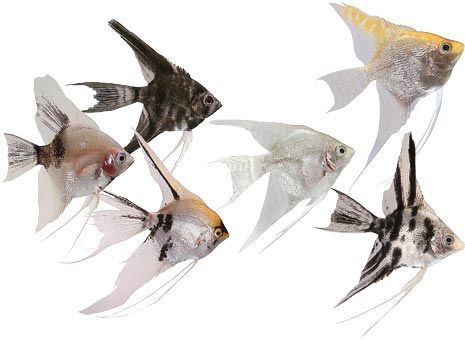
18
Feb
Scalar Fish
The scalar or angelfish is a very popular aquarium fish and belongs to the cichlid family. Their correct latin name is Pterophyllum scalare. Like many other, tropical fish the scalar originates from South America, where he is domestic to the Amazon region. Pterophyllum altum, the deep- or altum angelfish is very popular and usually available in its wildform. This one is built even higher and more elongated than the regular angelfish Pterophyllum scalare.
Characteristics
Like discus, scalars have a stocky, disc-shaped physique. The very long fins are unique to this species. These aquarium fish are quite large (about 20 cm) and most of all very tall. An adult Altum Scalar may well exceed a height of 35 cm. The male specimens usually have a beefier head. The sexes can also be distinguished by the sexual openings. The female genital papilla has a much rounder shape than the male counterpart.
The wild form has a silvery-gray color with black, vertical stripes, though different cultivated breeds and color variations are commercially available today.
Angelfish in the Aquarium
Angelfish can be kept pretty well in a planted tank, as long as you commit to the keeping requirements of these special fish. Since, to a small extend, scalars feed on plants, e.G. duckweend or filamentous algae, there is a small risk, that other, especially fine-leaved, aquarium plants will be eaten. In order to avoid this, one should pay attention to a balanced diet and to offer vegetable food (for example pellets) from time to time.
Species
The most commonly kept species in the aquarium is Pterophyllum scalare. Most of the individuals in the aquarium trade are captive-bred. Sometimes, captive-bred Pterophyllum altum is available. Pterophyllum leopoldi is the hardest to find in the trade.
Compatibility
In pet stores, the freshwater angelfish is typically placed in the semiaggressive category. Some tetras and barbs are compatible with angelfish, but ones small enough to fit in the mouth of the angelfish may be eaten. Generous portions of food should be available so the angelfish do not get hungry and turn on their tank mates.

